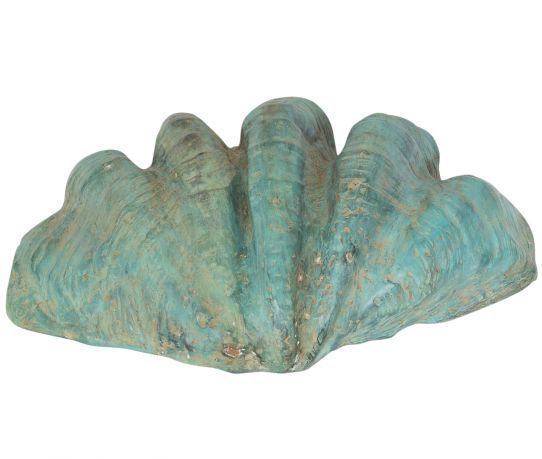We use cookies to make your experience better.
Font Shell (Clams) made of bronze (one-piece) great decor piece.
The baptismal shell is the largest currently living bivalve mollusc. The length of the shell is more than one and a half meters and the animal can weigh around 250 kilos. The shell is quite convex and has both slight grooves in the width and a strongly undulating shell. The color of the shell is usually brown or white. However, the actual color is often no longer visible due to an overgrowth of algae, corals and other organisms that grow on it. The Pearl of Allah, a large porcelain-like white pearl without the lustrous mother-of-pearl, was found in a baptismal shell in the waters around the Philippines. Like many molluscs, clams are hermaphrodite. That means that the animals have both male and female sexual organs. Although the animals are hermaphrodite, male and female germ cells are not produced simultaneously. Only male gametes are injected into the water during the first 2 to 6 years. Female ova are produced during the rest of life. The fertilization takes place outside the animal, free in the seawater. Like most molluscs living in the sea, the baptismal shell has a planktonic larva stage. The larva stays in the water column for some time to sink to the bottom if the larval shell becomes too heavy for a floating existence. When the larva ends up in a suitable place, it grows into an adult animal. The maximum age of the font shell is probably around one hundred years. The species lives in coral reefs. Like many other coral species, the baptismal shell lives in symbiosis with dinoflagellates from the zooxanthellae group (single-celled algae). These need light for photosynthesis and the baptismal shell therefore only lives in clear, shallow water. The algae provide a large part of the required nutrients. When the shell is open, these algae are visible as a greenish 'skin' of the animal. Another but less important part of the food is obtained by filtering nutrients from the seawater with the help of the gills. The organ essential for the digestion of food obtained in the latter way, the crystal stem, is greatly reduced in the baptismal shell. In the event of a disturbance, the shell closes, and the shell is also closed at night. A closed shell is not hermetically sealed, but there are always openings.
| Dimensions | 200 x400 x570mm |
|---|












